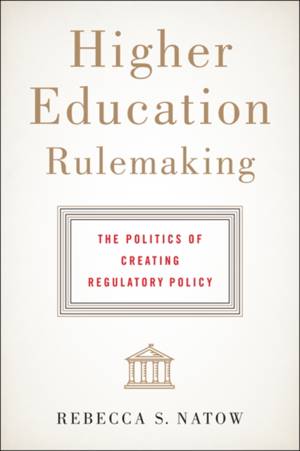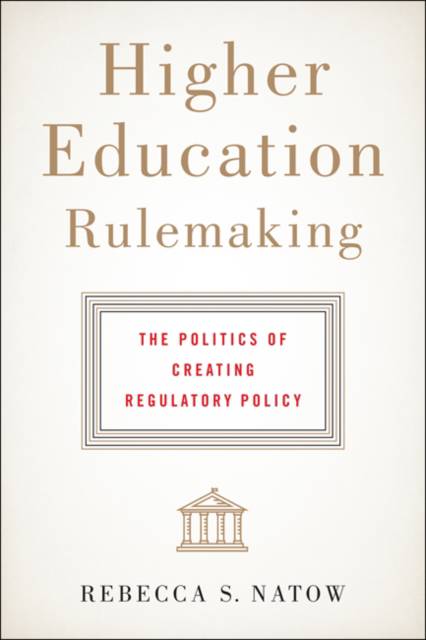
- Retrait gratuit dans votre magasin Club
- 7.000.000 titres dans notre catalogue
- Payer en toute sécurité
- Toujours un magasin près de chez vous
- Retrait gratuit dans votre magasin Club
- 7.000.000 titres dans notre catalogue
- Payer en toute sécurité
- Toujours un magasin près de chez vous
Higher Education Rulemaking
The Politics of Creating Regulatory Policy
Rebecca S NatowDescription
An in-depth look at how federal regulatory policy for higher education is drafted, influenced, and enacted.
Many higher education academics and administrators have only vague notions about how the federal government makes regulations governing colleges and universities in the United States, and yet these regulations control many important aspects of the operation of these institutions. What happens after legislation affecting higher education is signed into law? How are specific provisions implemented--especially when the statute's details are unclear? And who determines the details of the programs that a particular law has authorized?
In this concise and informative book, higher education policy expert Rebecca S. Natow explores the how and why of the federal regulatory policymaking process as it pertains to higher education, financial aid, and student loan debt. Drawing on in-depth interviews with policy and higher education actors, as well as an extensive review of specific regulations and documents, Natow explains who influences higher education rulemaking and how their beliefs and surrounding contexts guide the policies they enact. She also examines the strategies and powers employed during the process, reveals how technology affects the creation of higher education rules, delves into the multifaceted implications of regulation for students and institutions, and discusses future prospects for higher education rulemaking.
The first comprehensive, research-based account of this important policymaking process, Higher Education Rulemaking will serve as a valuable resource for scholars, researchers, policymakers, and higher education professionals.
Spécifications
Parties prenantes
- Auteur(s) :
- Editeur:
Contenu
- Nombre de pages :
- 216
- Langue:
- Anglais
Caractéristiques
- EAN:
- 9781421421469
- Date de parution :
- 12-12-16
- Format:
- Livre relié
- Format numérique:
- Genaaid
- Dimensions :
- 157 mm x 229 mm
- Poids :
- 362 g







